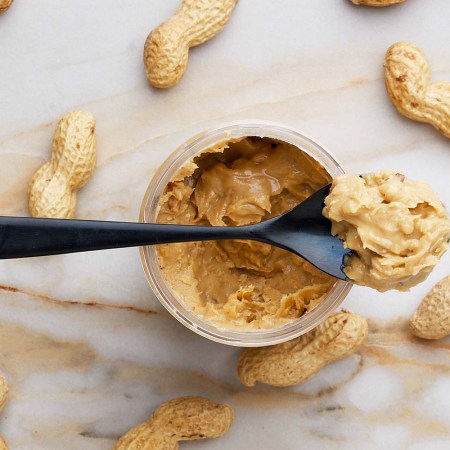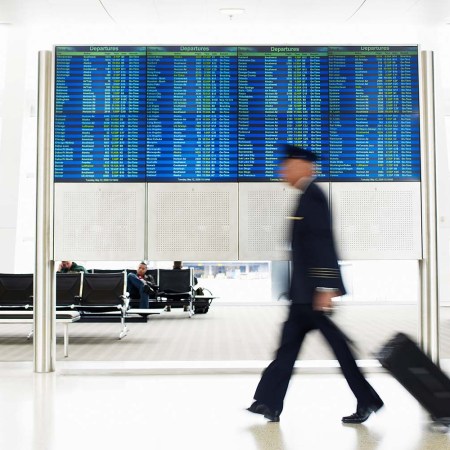You don’t have to be a frequent flier to know that airplane food is spectacularly bad. Chicken, beef or pasta? It’s a question to which there is truly no right answer, because they’re all likely to taste exactly the same, which is to say like nothing at all. But it turns out there’s an explanation for that — and it has very little to do with the food itself.
In 2010, in conjunction with Lufthansa, the Fraunhofer Institute for Building Physics IBP in Holzkirchen conducted a study using a “simulated aircraft cabin environment,” which looked at the “effects of reduced pressure in the aircraft cabin on our taste experience.”
It was ultimately determined that people’s perceptions of smells and tastes are different in the air, and for a variety of reasons, the most pertinent of which has to do with the way the reduced pressure in the aircraft affects the human body. More specifically: how oxygen saturation in the blood is reduced, which, according to the study, affects the olfactory and taste receptors.
Commenting on the study, aroma chemist Dr. Andrea Burdack-Freitag said, “In the air, food and drink tastes as it does when we have a cold.”
Further, flying also affects our psychological perception. In “unfamiliar environments” — like, for example, on planes — people are more “exposed to basic stimuli” and, thus, less inclined to notice certain details. This, according to the study, “pushes up stimulus thresholds, with the result that a stronger stimulus is required to trigger a response.”
It was eventually concluded that the average person’s sensitivity to sweet and salty food is reduced by 30% inflight and, later, that umami is actually enhanced in the air.
In other words: it’s not the food.
Brian Chau is a food scientist, food systems analyst and self-proclaimed fungal fanatic whose firm, Chau Time, takes ideas from concept to commercialization. He’s spent a great deal of time working with brokers to understand how our perceptions of food are influenced under different altitudes, and — as an extension of that — getting certain food products onto planes.
According to Chau, eating on an aircraft is not dissimilar to eating in high altitude areas like Colorado or Machu Picchu, though it’s obviously exacerbated at 35,000 feet. “The higher you are, the more your senses get dulled,” Chau explains. “It all has to do with the pressure, and that pressure and the higher altitude affects how you interpret taste.”
To combat this, airlines often rely on extra salt, extra sugar and extra carbonation to enhance the taste of certain food and drink products. Drinks are served with ice — not only to keep them cold — but also to add texture, thus enhancing the overall sensation and the user experience writ large.
Even still, just because our senses aren’t firing on full cylinders, doesn’t mean airlines aren’t putting the utmost thought into what they’re serving inflight. Earlier this year, travel writer Ramsey Qubein detailed a visit to Qatar Airways Catering Company — considered to be the world’s largest airline catering facilities — in which he reported that somewhere in the vicinity of 200,000 meals were being prepared from scratch, using all fresh ingredients, per week.
“The Qatar Airways’ catering facility uses as much fresh produce as possible. What the kitchen receives in the morning will be sliced, diced, baked and served by the same evening,” Qubein wrote. “Each day, the facility uses more than 165,000 pounds of fresh fruit and vegetables, going through 22,000 pounds of potatoes alone. The airline is the largest buyer of butter, eggplants, potatoes, and onions in all of Qatar. Each vegetable must be washed, sanitized, peeled, chopped, and sliced by hand.”
So why don’t they taste fresh once they’ve made it to your seat-back tray table? Chau says it’s mostly because of how they’re prepared. Food safety is, for obvious reasons, paramount. In addition to tasting bland in the air, things are frequently overcooked, too, to totally eradicate the risk of getting anyone sick. The menu items are almost always food products that are more universally liked (i.e. pasta and chicken). Alternatively, spicier food products (i.e. hot peppers) are almost always avoided.
“It’s another form of liability and legality, simply because airlines don’t know who’s on board, or their tolerance for spiciness. It doesn’t affect people in terms of food safety, but there are some legality issues because if a person is stuck in an airplane and they eat something spicy, outside of their tolerance level, there’s really nowhere else that they could go to to calm the pain receptors on their tongue.”
From there, once everything is prepped and ready to go, all of the meals (and sometimes snacks) are loaded up into trucks with either warmers or coolers and driven around from plane to plane to be distributed.
All of this to say: the process of getting food onto planes and in front of customers is a long and very involved one. In fact, Chau once helped develop a snack for a major airline that went through 500 iterations within the product development cycle before it was actually able to be served inflight.
“There was a list of marketing criteria for this particular snack: it had to be 28 grams, or one ounce, easy to consume, very small, a certain amount of calories, allergen free, etc.,” he explains. “In terms of the flavor component, it had to be a little extra salty to actually be tasty. And then the product had to be able to withstand a lot of damage, as it’s being moved around. It had to have minimal impact on the messiness for the user experience.”
The good news is that every airport is well-stocked with flight-friendly snacks once you’ve gotten past TSA, in that most of them are already pretty salty (or sweet) in the first place.
And, when in doubt, Chau suggests you should always grab some chocolate.
“Chocolate is actually one of the best options,” he says. “It’s not typically offered on planes because it’s really expensive for airlines, but chocolate is really nice — especially chocolate squares — because it has the melt factor on the tongue, a little bit of sweetness, a little bit of bitterness, and it’s just a great sensation.”
As for his choice of entree? “I try to pick one that has a soft element, so if there’s some mashed potatoes, or some mac and cheese, I typically try to pick those options, as they’re just nice textures,” he says. “If there’s a meat option, I try to stay away from chicken, because it can be really dry — not only for food safety purposes, but, again, a lot of salt gets added into it so it gets dried out. Same can be said with the beef, but if there’s gravy, then I opt for something that can change up the texture.”
“But for the most part beggars can’t be choosers,” he adds. “Sometimes you just have to consume it and hope that they give you one of those little Haagen-Dazs ice creams to finish the meal with.”
For more travel news, tips and inspo, sign up for InsideHook's weekly travel newsletter, The Journey.






















